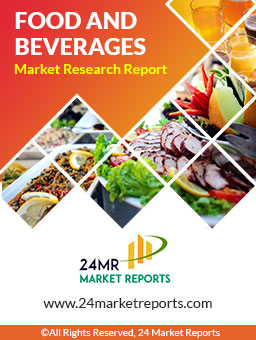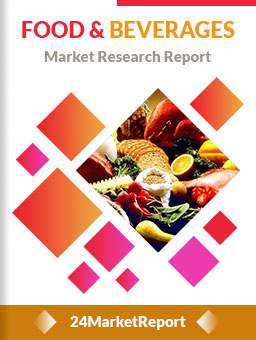
COMPANIES COVERED
Archer Daniels MidlandDownload FREE Report Sample
Download Free sampleReport Overview:
High fructose corn syrup (HFCS) is a liquid sweetener utilizing a modified form of corn syrup which is also an alternative to sucrose used in foods and beverages industry. High fructose corn syrup is made from corn using a process called wet milling. It holds around nine percent of overall global sweeteners market. There is no as such difference in composition or metabolism from other fructose glucose sweeteners for instance sucrose, honey, and fruit juice concentrates. It generally contains either 42 percent or 55 percent fructose, the remaining sugars being primarily glucose and higher sugars. HFCS is has more stablility, particularly works well in acidic beverages, available in liquid form makes it easier to transport, handle, and mix better than granulated sucrose. Since, fructose is sweeter than glucose, the overall sweetness of the syrup increased resulting in more cost-effective use over sugar in food processing. Its caloric content is equivalent to sugar and thus it shares the same concerns from consumers and industry as that of sugar. Further, the human body metabolizes fructose differently than glucose and so high consumption of HFCS has also been attributed to increasing rates of obesity. HFCS has been widely adopted by U.S. food manufacturers because it offers advantages over granulated sucrose, for instance it is easy to supply, good for stability and ease of handling. Corn is an abundant and reliable crop grown widely across the U.S., while sucrose production is limited. This means most supplies must be imported into the U.S. from sugar-growing countries, which leaves the supply vulnerable to changes in the weather and political conditions in those countries. HFCS is also more stable, particularly in acidic beverages, and because of its liquid form, it is easier to transport, handle, and mix than granulated sucrose.
The Global High-Fructose Corn Syrup Market Size was estimated at USD 7523.71 million in 2023 and is projected to reach USD 9195.07 million by 2029, exhibiting a CAGR of 3.40% during the forecast period.
High-Fructose Corn Syrup Market provides a deep insight into the global High-Fructose Corn Syrup market covering all its essential aspects. This ranges from a macro overview of the market to micro details of the market size, competitive landscape, development trend, niche market, key market drivers and challenges, SWOT analysis, Porters five forces analysis, value chain analysis, etc.
The analysis helps the reader to shape the competition within the industries and strategies for the competitive environment to enhance the potential profit. Furthermore, it provides a simple framework for evaluating and accessing the position of the business organization. The report structure also focuses on the competitive landscape of the Global High-Fructose Corn Syrup Market, High-Fructose Corn Syrup Market introduces in detail the market share, market performance, product situation, operation situation, etc. of the main players, which helps the readers in the industry to identify the main competitors and deeply understand the competition pattern of the market.
In a word, High-Fructose Corn Syrup Market is a must-read for industry players, investors, researchers, consultants, business strategists, and all those who have any kind of stake or are planning to foray into the High-Fructose Corn Syrup market in any manner.
Global High-Fructose Corn Syrup Market: Market Segmentation Analysis
The research report includes specific segments by region (country), manufacturers, Type, and Application. Market segmentation creates subsets of a market based on product type, end-user or application, Geographic, and other factors. By understanding the market segments, the decision-maker can leverage this targeting in the product, sales, and marketing strategies. Market segments can power your product development cycles by informing how you create product offerings for different segments.
Key Company

Speak to our Custom Research Team and get the Custom Research in a budget
Custom ResearchFrequently Asked Questions ?
A license granted to one user. Rules or conditions might be applied for e.g. the use of electric files (PDFs) or printings, depending on product.
A license granted to multiple users.
A license granted to a single business site/establishment.
A license granted to all employees within organisation access to the product.
Upto Working 24 to 48 hrs
Upto 72 hrs max - Weekends and Public Holidays
Online Payments with PayPal and CCavenue
Wire Transfer/Bank Transfer
Hard Copy




 Industry Market Size
Industry Market Size SWOT Analysis
SWOT Analysis Industry Major Players
Industry Major Players Revenue Forecasts
Revenue Forecasts Historical and Forecast Growth
Historical and Forecast Growth Profitability Analysis
Profitability Analysis
























